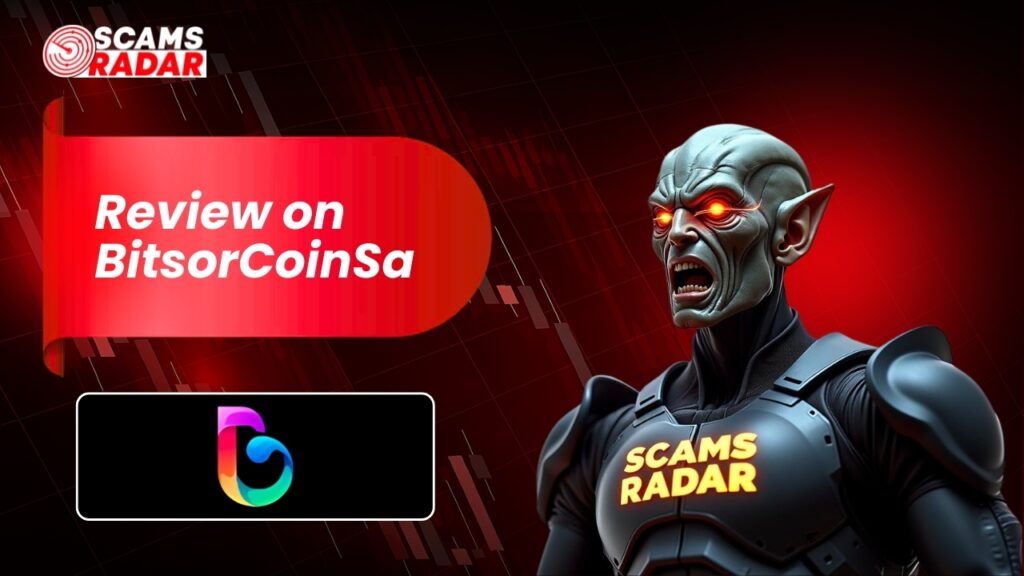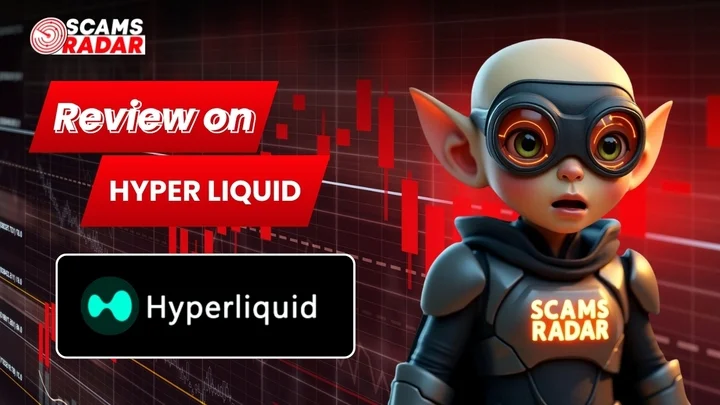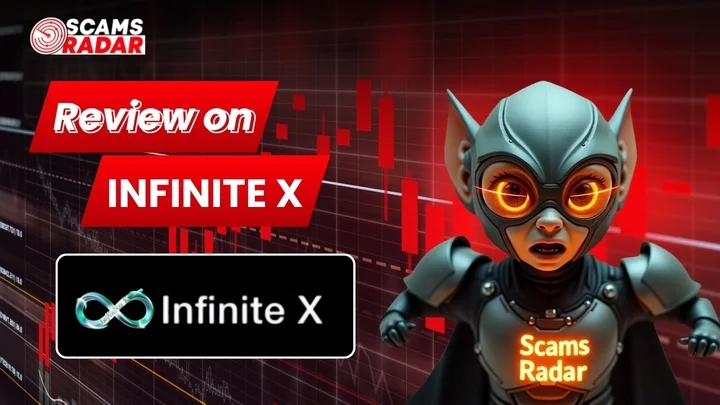Bitcoin Yay Review: Could This Crypto Platform Be the Trap Everyone Missed
Bitcoin Yay, hosted at bitcoinyay.com, markets itself as a cryptocurrency platform offering high returns through trading and affiliate programs. Launched in early 2025, it promises quick profits, raising questions about its legitimacy. On ScamsRadar, we analyze BitcoinYay’s ownership, compensation plan, traffic trends, public perception, security measures, content authenticity, payment methods, customer support, technical performance, and ROI claims. Using mathematical calculations, we assess the sustainability of promised returns, identify red flags, and compare it to real estate, bank savings, and crypto exchange APYs. Written in clear, simple language, this review helps everyday investors make informed decisions.


Table of Contents
Ownership and Transparency
BitcoinYay’s ownership is obscured, a significant concern. WHOIS records show the domain was registered on January 15, 2025, via Squarespace Domains LLC, with privacy protection hiding the registrant’s identity. No verifiable corporate or team details are disclosed on the website, unlike reputable platforms like Coinbase, which share founder backgrounds. The absence of a legal entity or named founders suggests potential accountability issues, a common trait in high-risk schemes.

Compensation Plan Breakdown
BitcoinYay’s business model combines trading with a tiered affiliate program, resembling multi-level marketing (MLM). Users purchase access at various tiers:
- Bronze: $97, $37/referral, basic trading tools.
- Silver: $297, $100/referral, advanced analytics.
- Gold: $997, $400/referral, premium signals and mentorship.
The platform claims users can earn through automated trading bots and referrals. It promotes returns of 1–5% daily (30–150% monthly), emphasizing recruitment for higher earnings. This structure incentivizes aggressive promotion over trading profits, a hallmark of MLM schemes.
Sustainability Analysis
Assume 100 users invest $1,000 each ($100,000 total) at a promised 3% daily ROI ($30/day per user). Monthly payouts would be:
- Monthly Payout: $30 × 30 = $900/user
- Total Liability: $900 × 100 = $90,000
To sustain this, BitcoinYay needs new funds monthly, as no legitimate trading bot achieves consistent 90% monthly returns. The table below shows the exponential recruitment needed:
Year | Users | New Users Needed |
1 | 100 | 150 |
2 | 150 | 225 |
3 | 225 | 338 |
This exponential growth, reliant on new investors, mirrors Ponzi schemes, collapsing when recruitment slows.

ROI Comparison
BitcoinYay’s claimed 360–1,800% annual ROI is unrealistic compared to traditional investments:
- Real Estate: 6–10% annually, stable but illiquid.
- Bank Savings: 4–5% APY, FDIC-insured.
- Crypto Staking: 2–6% APY (e.g., Coinbase).
- BitcoinYay: 360–1,800%, unsustainable.
Traffic Trends
BitcoinYay has low organic traffic, with a global rank of ~3.1 million (SimilarWeb estimate, ~2,500 monthly visitors). Growth appears driven by paid ads and affiliate links on YouTube and Telegram, not organic interest. The domain’s short life (expiring January 2026) suggests temporary intent, a red flag for long-term reliability.
Public Perception
Public sentiment is limited due to the platform’s newness. ScamAdviser gives a 65/100 trust score, citing hidden ownership and MLM traits. Gridinsoft scores it 31/100, noting affiliate-heavy redirects. Reddit and Trustpilot have minimal reviews, mostly promotional, suggesting biased feedback from affiliates. Posts on X highlight the site’s low trust score and new domain (February 2025 registration).
Security Measures
The site uses a Let’s Encrypt SSL certificate for basic encryption but lacks advanced safeguards like two-factor authentication or third-party audits. No details on wallet security or multi-signature protocols are provided, increasing risks of hacks or fraud.
Content Authenticity
BitcoinYay’s content focuses on motivational videos and trading success stories, with little technical detail on its trading bot or blockchain. The lack of a whitepaper or transparent tokenomics, unlike projects like Chainlink, suggests promotional hype over substance. Content mirrors other high-yield investment programs (HYIPs), raising authenticity concerns.
Payment Methods
Payments are accepted in cryptocurrencies (Bitcoin, USDT) and credit/debit cards via a third-party gateway. No refund policy is documented, and crypto-only payments limit chargeback options, increasing financial risk. Reports of withdrawal delays and sudden KYC demands are noted on X.
Customer Support
Support includes LiveChat and a Telegram helpdesk, but moderators are unverified, and no corporate address is listed. Responsiveness is inconsistent, with some users reporting unresolved withdrawal issues, a common exit scam tactic.

Technical Performance
The website is fast-loading with a simplified dashboard but relies heavily on JavaScript, potentially obscuring content. No server uptime metrics are shared, and the short domain life questions reliability.
Red Flags
- Hidden Ownership: Privacy-protected WHOIS, no team details.
- MLM Structure: Earnings tied to recruitment, not trading.
- Unrealistic ROI: 360–1,800% annually, unsustainable.
- Crypto Payments: No refunds, high risk.
- Low Traffic: Paid ads, not organic growth.
- Regulatory Risks: Unregistered, potential SEC scrutiny.
Social Media and Promoters
Promoters include YouTube’s “Anthony Lifestyle” and Telegram’s “Affiliate Money Makers,” also linked to SkyMining.network, iHub.Meta, and UTOPIAFlow.org, all flagged as questionable HYIPs. These accounts have a history of pushing short-lived crypto ventures, reducing credibility.
DYOR Tool Reports
- ScamAdviser (July 2025): 65/100, cites hidden ownership, new domain.
- Gridinsoft (July 2025): 31/100, flags affiliate redirects.
- ScamDoc: Not listed, awaiting registration.
- SimilarWeb: ~3.1M rank, low organic traffic.
Future Predictions
BitcoinYay’s reliance on recruitment and unrealistic returns suggests a 6–12-month lifespan, similar to Bitconnect’s collapse in 2018. Regulatory action from the SEC or FTC is likely if unregistered securities are involved. Market saturation or withdrawal issues could trigger an exit scam.
Recommendations
- Avoid Investment: High risks outweigh unverified rewards.
- Research Thoroughly: Use ScamAdviser, Gridinsoft, and Reddit.
- Choose Regulated Platforms: Opt for Coinbase (2–6% APY) or index funds (7–10% ROI).
- Verify Promoters: Check YouTube/Telegram histories.
- Consult Advisors: Seek licensed financial guidance.
Bitcoin Yay Review Conclusion
This BitcoinYay review exposes a high-risk platform with hidden ownership, an MLM-based model, and unsustainable ROI claims of 360–1,800%. Compared with real estate (6–10%), bank savings (4–5%), and crypto staking (2–6%), its promises are patently implausible. Investors should avoid BitcoinYay, focus on regulated platforms, and conduct independent research to safeguard their funds. For a similar deep dive into another questionable scheme, see our internal Send It Academy Review.

Bitcoin Yay Review Trust Score
A website’s trust score plays a vital role in evaluating its credibility, and Bitcoin Yay shows a dangerously low rating—raising serious concerns about its legitimacy. Users are strongly advised to proceed with caution.
The platform presents several warning signs, including low traffic, poor user reviews, potential phishing threats, hidden ownership, unclear hosting information, and weak SSL security.
Given this low trust score, the chances of fraud, data breaches, or other harmful activity increase significantly. It’s essential to assess these red flags carefully before engaging with Bitcoin Yay or similar platforms.
Let me know the next company name whenever you want a swap.

Positive Highlights
- Content: Accessible
- Grammar Issues: None
- Archive Age: Old
Negative Highlights
- AI Reviews: Low
- Domain Age: New
- WHOIS: Hidden
Frequently Asked Questions About Bitcoin Yay Review
This section answers key questions about , providing clarity, promoting trust, and addressing concerns regarding the platform’s legitimacy.
Highly doubtful. The site hides its ownership, has no verified company registration, and scores extremely low on multiple trust-rating tools.
Unrealistic. While they claim $5 per letter, actual payouts are inconsistent, limited by casino policies, and often result in far lower returns.
No. Casinos are actively reducing rewards and rejecting submissions. As more people join, earnings shrink, making the model unsustainable.
There’s no evidence of protection. Multiple users report unauthorized charges, sudden deactivations, and zero support response after payment.
Because the program promotes inflated income claims, lacks ownership transparency, and users feel misled after paying hundreds for common knowledge.
Other Infromation:
Reviews:
There are no reviews yet. Be the first one to write one.



